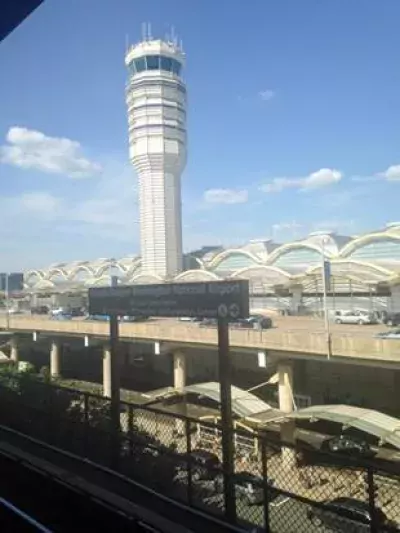How prepared are airports and airlines to handle a pandemic?
Physical distancing and avoiding shared surfaces can be quite difficult when it comes to air travel. Airports and airplanes have many of the features that the Centers for Disease Control (CDC) recommend you avoid to prevent the spread of diseases, such as COVID-19 (coronavirus).
We know that staying home and washing your hands thoroughly and frequently are ways to slow the spread of viruses, particularly during a pandemic. But, not everyone can avoid air travel, which has the potential to spread infectious diseases farther and faster than other kinds of transportation.
In today’s WatchBlog, we discuss how the U.S. aviation system plans and prepares to contain the spread of communicable diseases. We also discuss the status of our 2015 recommendation to improve the U.S. aviation system’s capacity to respond to a new outbreak.
How prepared are airlines and airports?
COVID-19 is not the first viral threat to impact our daily lives and disrupt the aviation industry. In 2003, an outbreak of severe acute respiratory syndrome (SARS) spread to 29 countries over a 6-month period. More recently, the 2014-2016 Ebola epidemic spread across West Africa claiming the lives of more than 11,000 people (according to the CDC). Both instances also offer examples of the potential economic cost that air travel disruptions can have on the U.S. and global economies.
Listen to our podcast from 2015 to learn more about the Ebola outbreak and how airlines prepared at that time.
Lessons learned from the past
Because of concerns about Ebola and future viral threats, in December 2015, we looked at 14 U.S. international airports and 3 major U.S. airlines to see how prepared they were for communicable disease threats from abroad and what challenges they faced when responding to these threats.
We found that while all of the international airports and major airlines that we studied had plans for responding to communicable disease threats from abroad—in the absence of a federal requirement—it was unclear how many U.S. airports and airlines had such plans. Further, we found that individual airport plans were intended to handle one or two flights with arriving passengers, rather than a full epidemic, which may require the involvement of multiple airports on a national level.
We also found that airports and airlines faced challenges in responding to communicable diseases. In the case of the Ebola response, representatives from one airport said that many airports had good efforts under way, but that the efforts were fragmented across airports leaving passengers and airlines to deal with differences in how travel is handled at each airport. Also, airline and airport representatives pointed to difficulties sharing timely and accurate information about threats. Furthermore, employees at aviation services firms that we spoke with—including contract workers who clean aircraft—raised concerns about the availability of training and access to personal protective equipment, among other things.
A national aviation-preparedness plan needed
Having a national aviation-preparedness plan would provide airports and airlines with an adaptable and scalable framework to align their individual plans. It would also help ensure that individual airport and airline plans work in accordance with one another.
In December 2015, we recommended that the Department of Transportation work with relevant stakeholders—such as the Department of Health and Human Services (HHS)—to develop a national aviation-preparedness plan for communicable disease outbreaks. While Transportation agreed that a plan is needed, as of March 2020, no such plan has been developed. Transportation continues to suggest that HHS and the Department of Homeland Security have responsibility for communicable disease response and preparedness planning, respectively, and that these departments should lead any efforts to address planning for communicable disease outbreaks.
Without a national plan in place, Transportation must engage with interagency partners like Homeland Security and HHS—as well as other industry stakeholders—on an ad-hoc basis to collaborate on response and preparedness.
For example, in response to the COVID-19 outbreak, Transportation has reported that it has facilitated conference calls between stakeholders—including federal agencies and aviation stakeholders—and has collaborated with the CDC (which is within HHS) to update interim guidance for airline crews about communicable diseases, specifically COVID-19.
Despite these efforts, we believe that Transportation is still in the best position to work with its relevant stakeholders to develop a national aviation-preparedness plan. This could guide preparation for dealing with communicable diseases nationally for individual airlines and airports, as well as establish a framework for communication and response for future communicable disease outbreaks.
To learn more about airline and airport preparedness, be sure to read our report.
Questions on the content of this post?
- Comments on GAO’s WatchBlog? Contact blog@gao.gov.
GAO Contacts
Related Products

GAO's mission is to provide Congress with fact-based, nonpartisan information that can help improve federal government performance and ensure accountability for the benefit of the American people. GAO launched its WatchBlog in January, 2014, as part of its continuing effort to reach its audiences—Congress and the American people—where they are currently looking for information.
The blog format allows GAO to provide a little more context about its work than it can offer on its other social media platforms. Posts will tie GAO work to current events and the news; show how GAO’s work is affecting agencies or legislation; highlight reports, testimonies, and issue areas where GAO does work; and provide information about GAO itself, among other things.
Please send any feedback on GAO's WatchBlog to blog@gao.gov.


